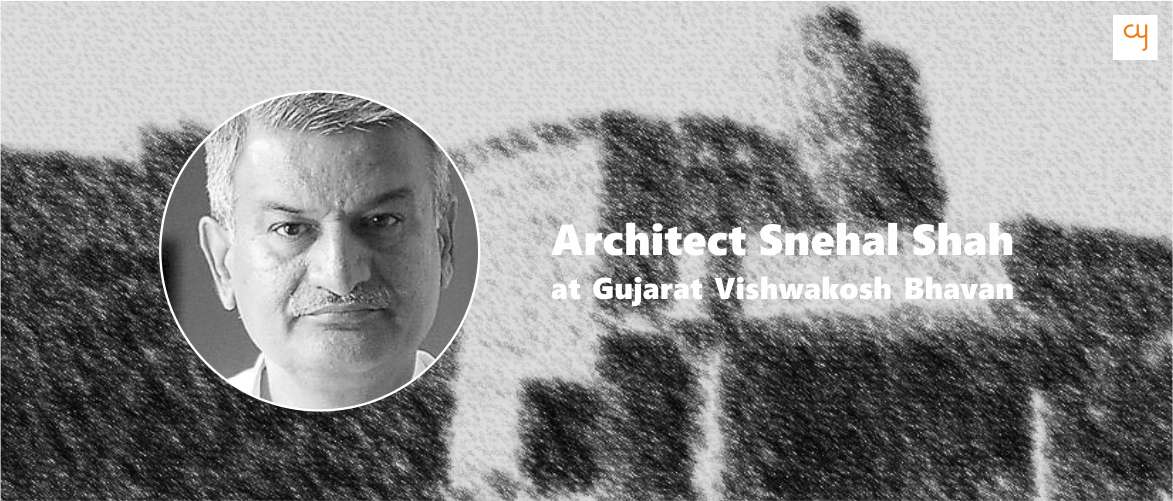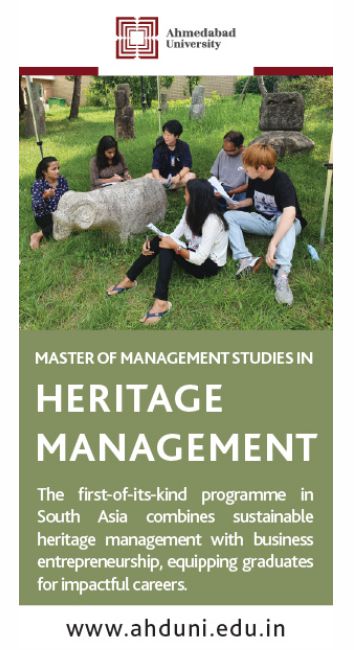Architecture of Ahmedabad: Where Inspiration is Born
Architect Snehal Shah on how the architecture of Ahmedabad has had a deep influence on the country, deeming the city worthy of heritage status. He speaks about how mosques in the city arose from temples, and how architecture is influenced by life.
“Ahmedabad is one of the richest cities in terms of architectural history. Actually, the whole state of Gujarat is where the real inspiration for all the archetypes in the country comes from.”
I keep hearing these words but never have I ever delved into researching or establishing these facts. Yesterday, I was presented with facts and figures and drawings and pictorial evidence to support the fact that Gujarat, and the architecture of Gujarat, is in fact the main inspiration behind the oh-so-famous architectural monuments of our country, from Qutub Minar to Taj Mahal to Jami Masjid, the way we know them now.
25th January saw Vishwakosh Trust bring forth Snehal Shah for an open lecture on the ‘Architecture of Ahmedabad in the 14th to 16th century’. Known for his extensive study of history nationally and internationally, Snehal Shah is a delight to listen to. A CEPT alumnus, he has studied under BV Doshi and then pursued his postgraduate studies at the Architectural Association Graduate School in London under Royston Landau. He has also worked with Swiss architect Mario Botta for several years. Though he has travelled all over the world, Shah came back to India in 1987 and has also been teaching at CEPT University.
The lecture was attended by an awestruck audience, comprised of all age groups, who had come together to know and understand the veins of the city they live in. It was a journey through time, starting from Ahmed Shah I and his vision for the city, to the 16th century, with his family line continuing to add their own flavours to the city.
Mosques arising from temples
I have always been fascinated with history so when Shah began by saying that lot of Muslim architecture of Ahmedabad was built from the debris of temples in the 13th century, it came as a surprise to me.
Evidence suggests that the first masjid built by Ahmed Shah in 1411 was the first of its kind in India to have minarettes and bastions. These mosques, although commissioned by a Muslim ruler, were built by the same artisans who were previously building temples. Their skills were fine-tuned towards building domes and carvings the way that Hindus did. All the ancient mosques, from Jami Masjid in 1414 to Jami Masjid in 1424 – the biggest masjid in the country back then – have been built by these artisans and the traces of their roots are therefore etched in the stones. From kalash and peepal pan motifs to wooden columns, these architectural elements were originally a part of Hindu temples, employed subsequently in Muslim architecture.
Domes of the masjids were in fact used just as they were, as if cut straight from the temples and transplanted in the mosques. These pictures were fascinating – like nothing I had ever come across before – and to see a study done so much in depth was astounding. Shah had pictures of all these built forms, from Masjids to Makbaras; to the evolution of Sufi architecture, based on a philosophy that men turned their prayers towards other men for holy guidance.
Life influencing architecture
Over this detailed study of the evolution of architecture in Gujarat, and especially in Ahmedabad, across two centuries, Snehal Shah covered the use of stone, wood, bricks and marble, and the inspirations and circumstances behind all of their uses.
Shah’s belief that architecture isn’t all that different from life, and is influenced by politics, culture, art and all the circumstances that happen in life, was elaborately explained through this lecture. His intricate comparisons were very evident in his presentation. For instance, he shed light on how the carving details of the Mosque of Rani Sabrai came from the textiles and motifs of prints in Gujarati textiles. And on how the Islamic geometrical patterns, as we know them today, were, in fact, the products of skilled sculptural artists who were used to making them for temple architecture.
Deserving heritage status
Concluding by showing the most ancient architectural map of Ahmedabad that he could find, Snehal Shah compared the evolution of architecture across the city and its boundaries. He stands firm in his claim that if Champaner can be given the status of a heritage city then Ahmedabad should be given similar status because studies prove that Champaner was modelled after Ahmedabad and that so many of the monuments that we now know as Islamic monuments of our country have also been modelled on the structures in Ahmedabad.
One thing I realized after the lecture was this – there’s more to this city than meets the eye. The Delhi Darwaja that I pass every day, or the Astodia gate that I see every now and then, have more history to them than any of us really know of. This lecture made certain the fact that now when I pass through this city that I call home, I will stop and see, and respect the foundations upon which it was built.
Photographs in Cover Image source: http://www.suryakantbhavsar.com/
Yatra Archives

 How Tulika Books is creating impact in children’s lives through picture books
Nandini Varma
How Tulika Books is creating impact in children’s lives through picture books
Nandini VarmaAug 21, 2019
A children’s book about a boy who feels like a girl. And about a child brought up by grandfathers. These are some of the stories published by Tulika Books, who have been making children’s picture books since 23 years. Little…
 Dalgona Coffee: A worldwide social media trend about home-made café experience
Harshil Shah
Dalgona Coffee: A worldwide social media trend about home-made café experience
Harshil ShahApr 2, 2020
While the lockdown has ignited various trends on social media, one that has received a major global following is #DalgonaCoffee. With thousands of posts on its name, here’s all you need to know about the Dalgona Coffee wave. I first…
 Leonardo, Michelangelo, Raphael and Donatello—Artists or Teenage Mutant Ninja Turtles characters?
Harshil Shah
Leonardo, Michelangelo, Raphael and Donatello—Artists or Teenage Mutant Ninja Turtles characters?
Harshil ShahNov 5, 2019
Did you ever wonder where the Teenage Mutant Ninja Turtles’ characters got their names from? Well, your search is complete. Here is a brief introduction of the artists from whom the creators of TMNT took inspiration. Teenage mutant ninja turtles,…
 The call of the mountains: orthopaedic Dr Yatin Desai’s advice on trekking
Himanshu Nainani
The call of the mountains: orthopaedic Dr Yatin Desai’s advice on trekking
Himanshu NainaniMay 24, 2019
In this piece 64 year old Dr Yatin Desai, shares with CY his inspiring story of how to scale towering mountains with utmost ease and how this life adventure activity can shape human character and health. Chances are high that…




